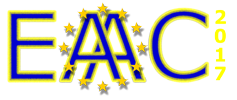Speaker
Mr
Petr Tuev
(Novosibirsk State University)
Description
Laser plasma wakefield acceleration is a hot topic of research in new acceleration methods. A lot of laboratories with suitable lasers investigate the laser-plasma interaction in many configurations. Nevertheless, numerical simulation is still a necessary tool to study processes occurring in the interaction region. Full PIC codes are the most powerful instruments, but they are computationally demanding. Quasistatic codes use non-trivial assumptions to speedup simulation by several orders of magnitude, but this model doesn’t take electron trapping into account.
Each time step only a small part of plasma electrons is trapped and doesn’t impact plasma fields much. However, the trapped charge accumulates and influences the wave structure. To simulate this effect, we move these plasma particles with the general equation of motion. If they stay in the simulation window, we continue simulating evolution of these particles with the beam particles model. We choose only plasma particles with velocity close to the speed of light to prevent non-physical wave breaking or extra beam-loading. The solution is compared with full-3D PIC code. The new numerical instrument allows to perform wide and detailed parametric scanning with a fast code and use heavy codes only for benchmarking.
Primary author
Mr
Petr Tuev
(Novosibirsk State University)
Co-authors
Alexander Sosedkin
(Novosibirsk State University)
Prof.
Konstantin Lotov
(Novosibirsk State University)
Mr
Roman Spitsyn
(Novosibirsk State University)

